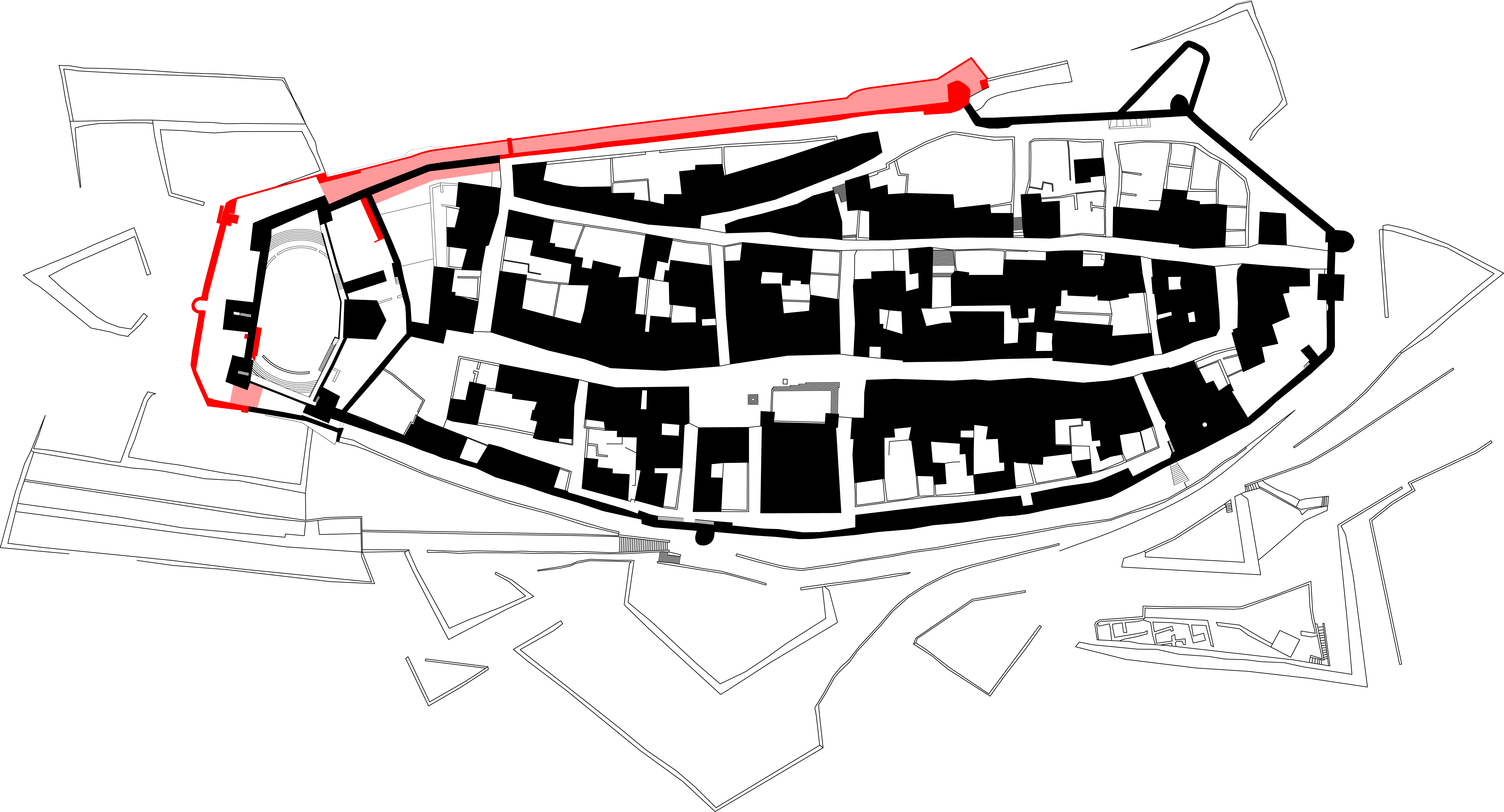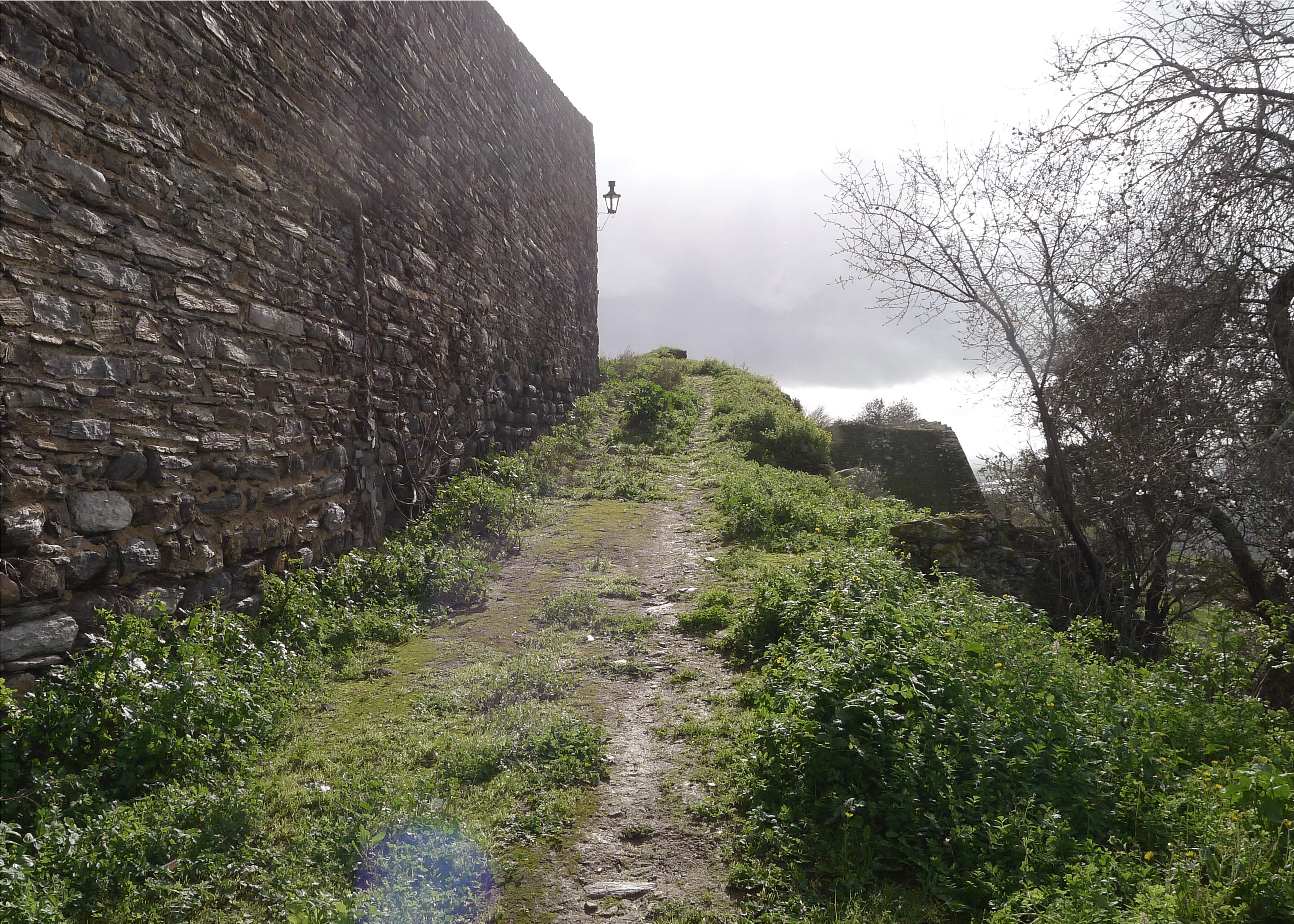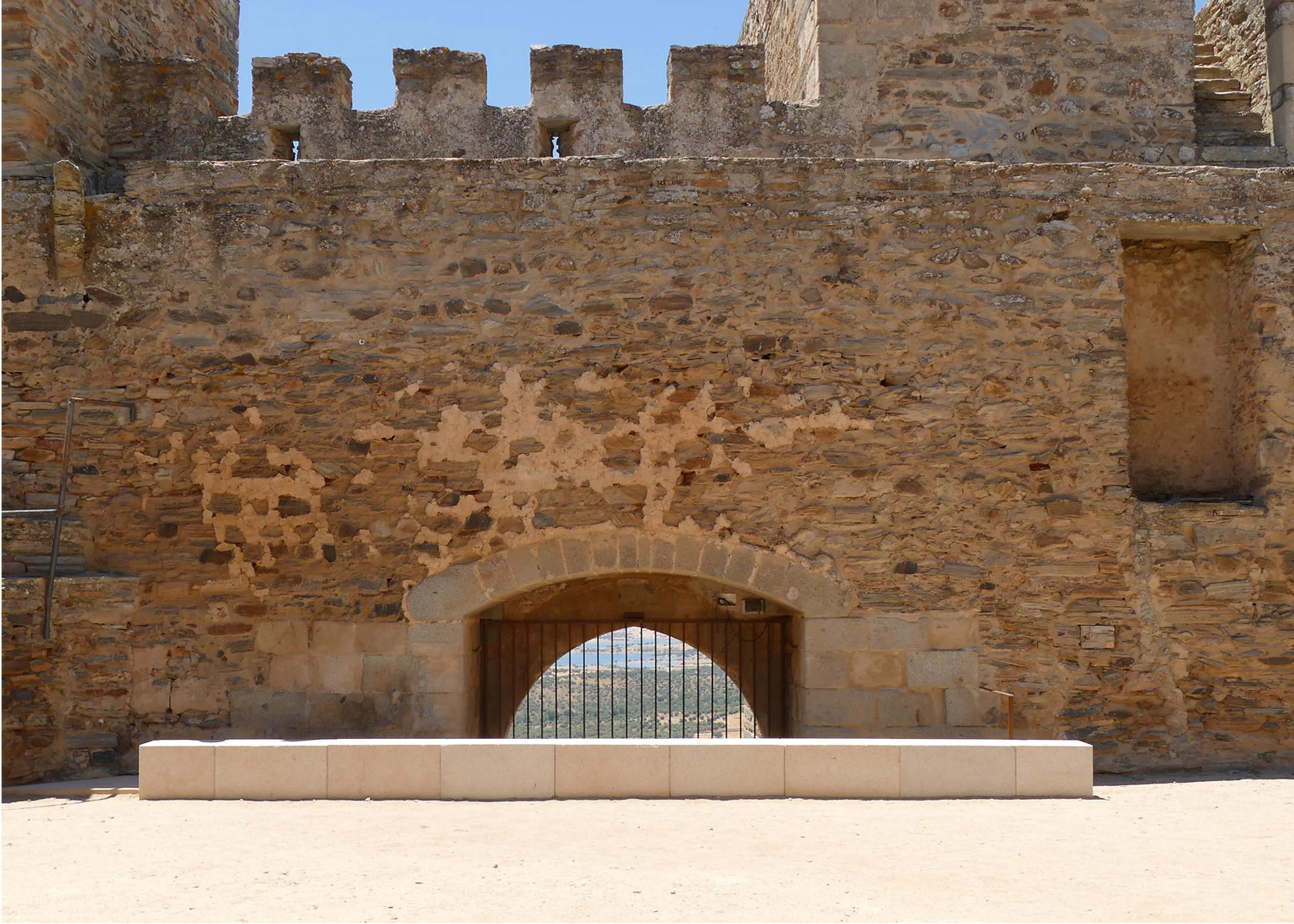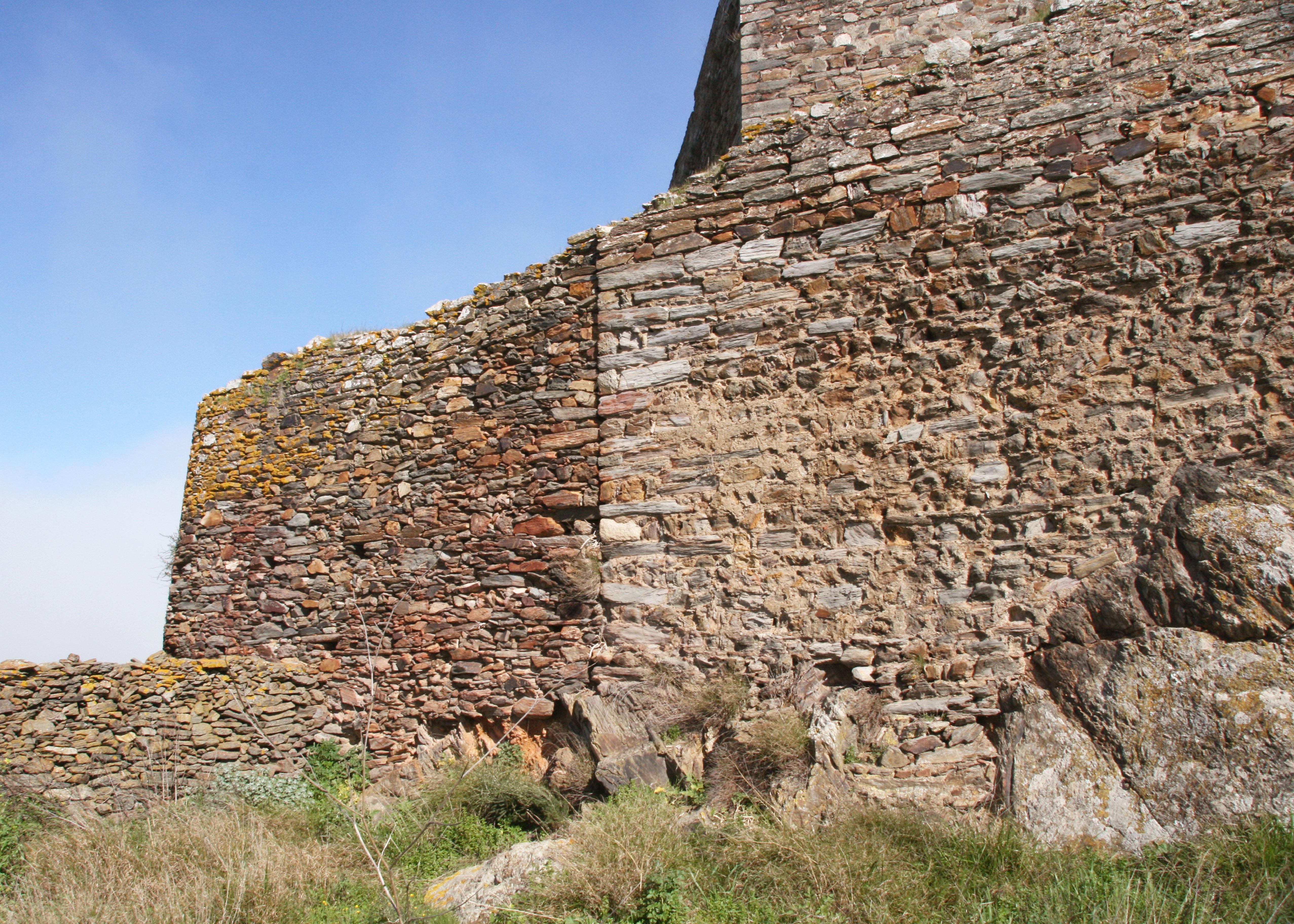CONSERVATION OF MONSARAZ FORTIFICATIONS
WEST AND SOUTH BARBICAN PATH
PP 2021
Francoise Choay has said many times that the culture of cities – our urban comun heritage - is very likely Europe's greatest contribution to world culture.
Monsaraz is an extraordinary “bastide” of the late middle ages, part of the long lines of defense of one of the most stable border lines of the oldest countries in Europe. Integrating a region of mixed and shared culture which today unites what the old nationalisms separated.
Monsaraz, almost abandoned by modernity – on XIX century, liberalism and privatization of the lands of the king/church and the arrival of the railway in the region caused the birth of a new city, Reguendos de Monsaraz, in the plain, where the inhabitants moved.
The almost abandoned fortification was in ruin and was almost entirely acquired, in the middle of the 20th century, by a powerful banker, lover of the arts and heritage – who founded the oldest school of restoration of Portuguese movable heritage, still in activity (Ricardo Espírito Santo Foundation) – to restore it philologically and offer it for the enjoyment of its guests, from the world.
The powerful General Directorate of National Buildings and Monuments DGEMN from the dictatorial times developed successive restorations of the medieval parts of Monsaraz in the logic of stylistic restoration (Viollet le Duc). The most significant restoration work carried out was, in fact, the renewal of walled walls and the pavement with traditional stone. Began in the mid-1950s, those works take place practically uninterruptedly for another 25 years.
The return of democracy in the mid-70s allowed the return of this city to public domain and appreciation, and since then a vast process of rehabilitation and requalification of that territory began.
The creation of the near Alqueva dam – one of the largest in Europe – opened up new possibilities for the agricultural world and the region has stood out as an ecological and cultural destination, now offering remarkable living conditions with enormous attractiveness.
This project began with the need to repair and consolidate the medieval perimeter to the west and south. In the course of this process, was discovered that the restorations of the 1950s had left hidden the previous defense system – Barbacan – and the routes that connected it to the parts of a modern fortification (Vauban system).
With the same budget originally planned, it was possible to reformulate the first intentions, which allowed the reopening of the Barbacã route, connecting it to another interior route (Portas Évora, Casa Inquisition, Castle) by reopening hidden doors.
The process of conservation and restoration was careful, seeking to clarify the legibility of what is authentic and what is contemporary (in detail),integrating the new interventions in the history of material culture and for this reason ancestral materials and technologies were used seeking the most natural integration (but you can recognize what is new in detail). The infrastructure, drainage and public lighting needs were resolved.
The lighting of the fortress was revised: was using excessive and unacceptable solutions (excessive power and a quality of light that resulted in light pollution). Associated with the right to the night (Monsaraz joined the Sark Skyes initiative) the new lighting project ensured light quality (2400kelvin) with no light pollution and minimum consumption.
Accepting the long time of this place, the project allows a journey through the different strata of human occupation and the palimpsest that the city and the fortifications constitute (previously impossible to understand and visit).
The 20th century restorations always focused on the medieval set within the walls, however an extraordinary landscape surrounds Monsaraz and this project allows the interconnection with systems of routes through this cultural landscape and a better perception/understanding of the border territory – said to “Raia” - between Spain and Portugal, for a long time subject to abandonment. Projects like these help to bridge what borders once separated, in rural territories far from the big metropolis, but truly authentic and genuine, today rare and that urgently need to be safeguarded in Europe.

Caminho da Barbacã

AC 2021
PP 2016
PP 2021

PP 2016
 AC 2021
AC 2021

PP 2016

PP 2021

PP 2016
 AC 2021
AC 2021About “Barbican Path”︎︎︎
Porta de Évora
PP 2021
 PP 2016
PP 2016
PP 2021
 PP 2016
PP 2016
AC 2021
About “Porta de Évora”︎︎︎
Pátio Casa Inquisidor-Mor

PP 2021

PP 2016

AC 2021
About “ Pátio Casa Inquisidor-Mor ”︎︎︎
Porta de Armas do Castelo
PP 2021

PP 2016

AC 2021

PP 2016

PP 2021
About “Porta de Armas do Castelo”︎︎︎
Porta da Traição
PP 2021

PP 2016

AC 2021

PP 2016

PP 2021

PP 2016
 PP
PPAbout “Porta da Traição”︎︎︎
...from defense to landscape...
PP 2021